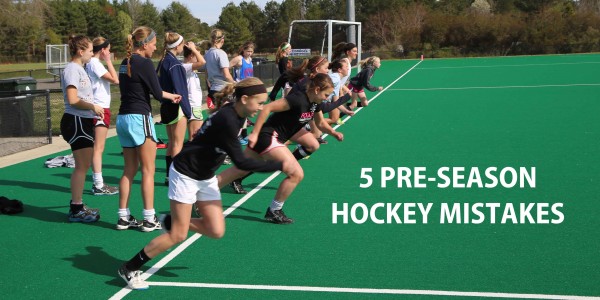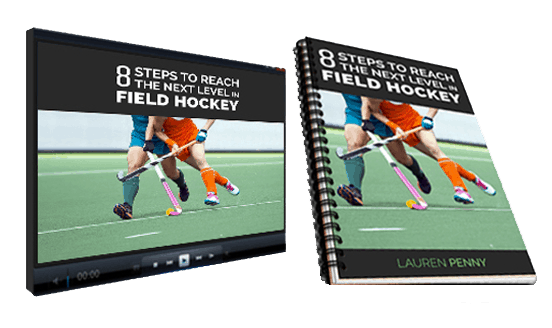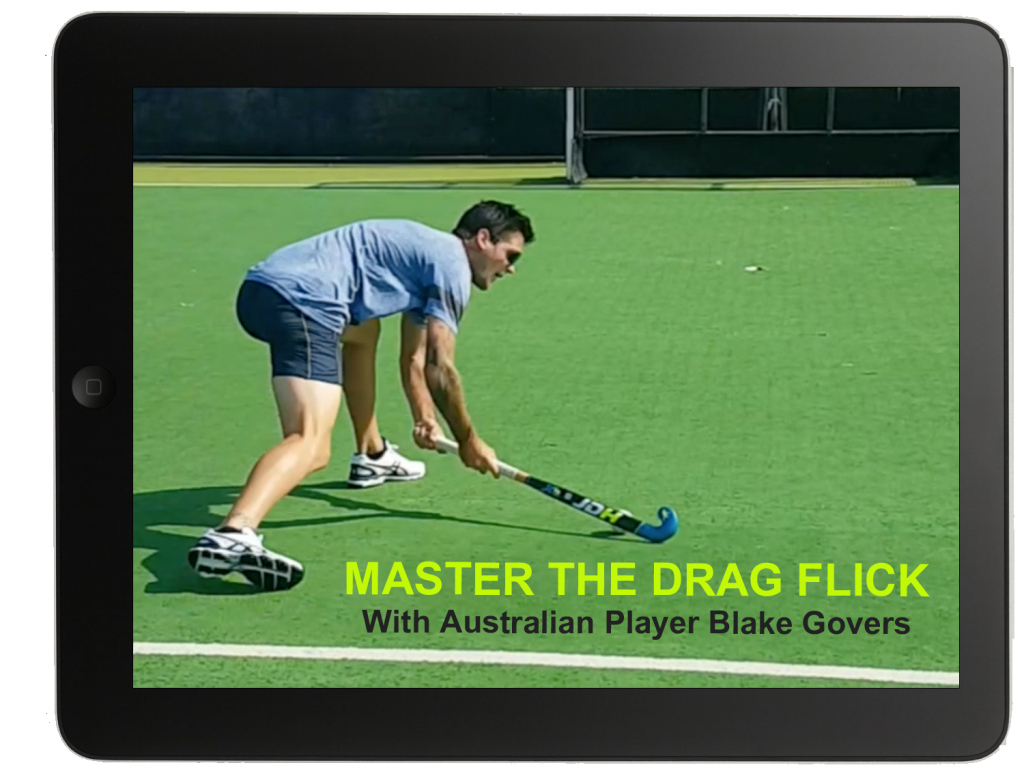Do you ever struggle with pre season hockey fitness, wonder what you should be doing or pick up little niggles throughout the season?
Then make sure you avoid the common field hockey pre season fitness mistakes highlighted in this post.
As we approach pre-season (in some parts of the world), many players are starting to think about getting fit for the upcoming hockey season.
Here are a few things to keep in mind when preparing for your season.
5 Common Field Hockey Pre Season Fitness Mistakes
#1: Not Starting Early Enough
Too many players wait until they start training with their team instead of taking responsibility for their own fitness and building the necessary foundations required prior to team pre-season training.
My advice is to stay fit over the course of the year by doing other forms of training such as weights to build your strength for example.
You cannot train the same way throughout the year, that’s why you need a periodised program that structures in different phases depending on where you are in your season.
I advise starting 12-16 weeks before the season starts so you can prepare your body.
#2: Doing Too Much Too Soon
The eagerness of getting back into hockey and being on the pitch is exciting and it can be tempting to go too hard too soon, forgetting how tough hockey can be on the body.
The moment you realise how ‘unfit’ you’ve become after a break from hockey, the natural thing is to try pack in more to avoid that horrible feeling of fatigue.
But more is not always better.
It’s very important to progress gradually over time, this is called progressive overload. If you do too much too soon you are at risk of overuse injuries such as tendonitis, stress fractures, etc.
#3: Random Approach
Most players I speak to often have good intentions of getting fit for hockey but they follow a random approach as opposed to a structured approach.
Just going for a jog won’t cut it.
Related post: 6 Reasons Why Hockey Players Shouldn’t Run 5km’s For Fitness
I am a strong believer in ‘program rather than workout’
Instead of asking yourself “what should I do today?” it would be better to have a structured plan to follow which has been designed to achieve your fitness and hockey goals over a period of time that takes you from A to B.
(Best done by a professional who understands the science of program design for sport)
Don’t just pick random exercises or drills every session.
Equally you shouldn’t keep doing the exact same program for long periods of time either as your body adapts very quickly to change but remember you also need enough time to progress.
#4: Not Addressing Muscular Imbalances
Everyone’s body is different so what one person needs may vary to someone else which is why you shouldn’t just do what someone else does or you may set yourself up for injury. When I work with athletes, I always assess them first to make sure I provide them with something suitable.
Before adding weights or doing any speed & agility training, it’s very important that you address any potential area’s of weakness first.
This is one of the biggest mistakes I made in the past, which led to many injuries because some muscles were being neglected while others were getting ‘too strong’ in comparison.
Playing hockey requires putting your body in some awkward positions which tends to overwork certain muscle groups so we need to also address these with corrective exercises.
#5: Not Tracking Progress
Without measuring your progress it can be easy to lose motivation, focus and to just keep going through the motions instead of pushing yourself to see how far you can go.
Assessments can be used as a tool to not only track your progress but can also help keep us motivated and determined to keep improving. You need to make sure what you’re doing is effective and giving you the results you want.
Most people think hockey fitness is just about endurance but that’s not the case.
For example with my clients I use a range of assessments to measure various aspects of fitness from endurance, recovery, mobility, strength, speed, power, agility, etc. These are all important for being a fit hockey player.
So, What To Do For Pre Season Fitness?
If you’re still wondering what to do for your pre-season fitness then the short answer is:
It depends on a range of factors such as: your current level of fitness, your age, your training age (i.e. experience), level that you play, your goals, your position, etc.
I am a strong believer in “program rather than workout” and “every body is different” especially because I made so many mistakes in my training in previous years that led to injuries.
That is why I now always assess someone first before giving them a program. Even in all our online hockey video programs such as the Fit For Hockey Program the first module always focusses on assessing where you’re at first.
What I’ve learn’t in my experience is:
“Results come from the detail so don’t ignore them”
If you want to learn more about preparing for your season or improving your hockey fitness with a structured approach, you can Request a FREE 30 Minute Strategy Session here
Have you seen this yet?
If you haven’t already watched the 8 Steps video or read the ebook, download it below
FREE DOWNLOAD: 8 STEPS TO REACH THE NEXT LEVEL IN HOCKEY













